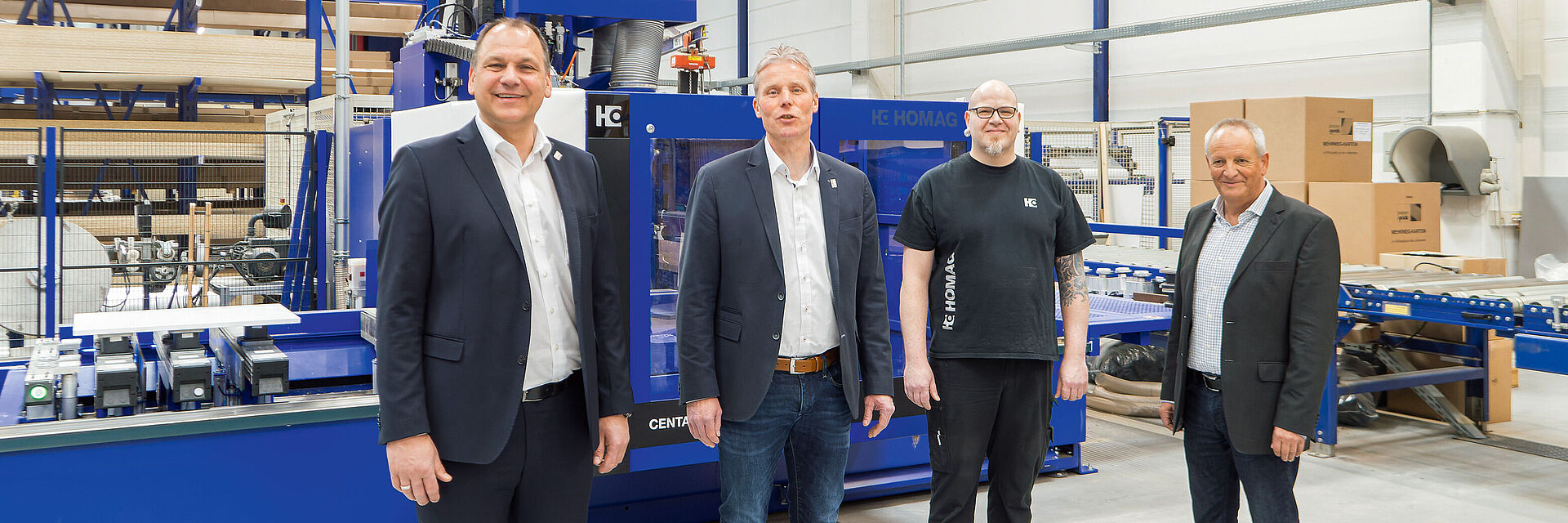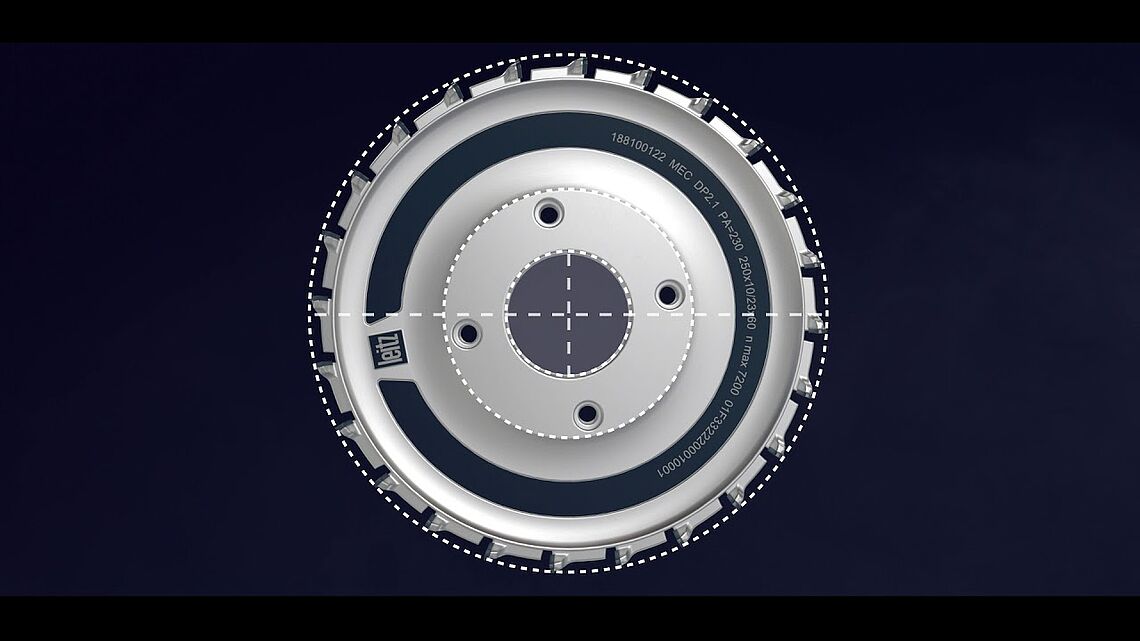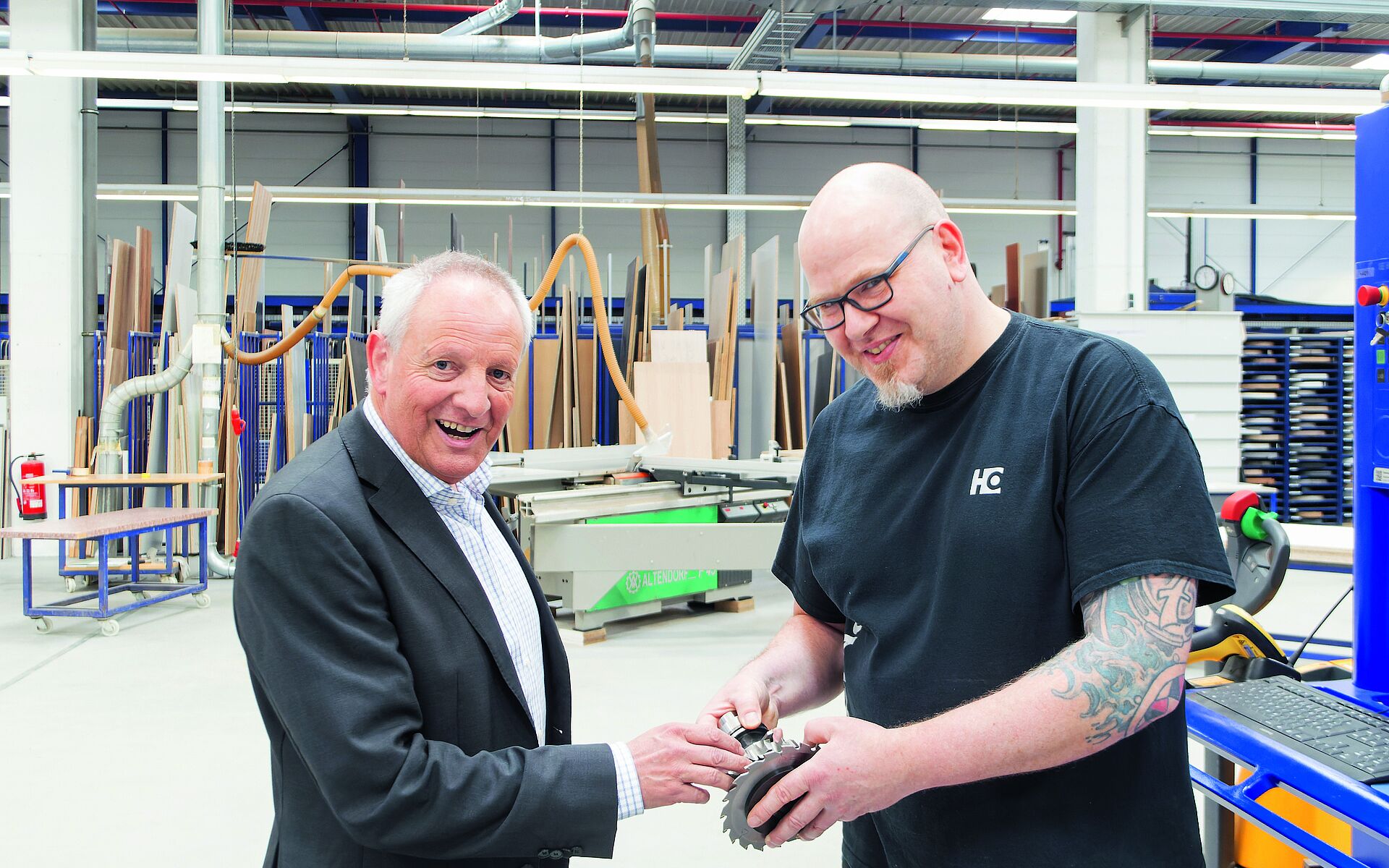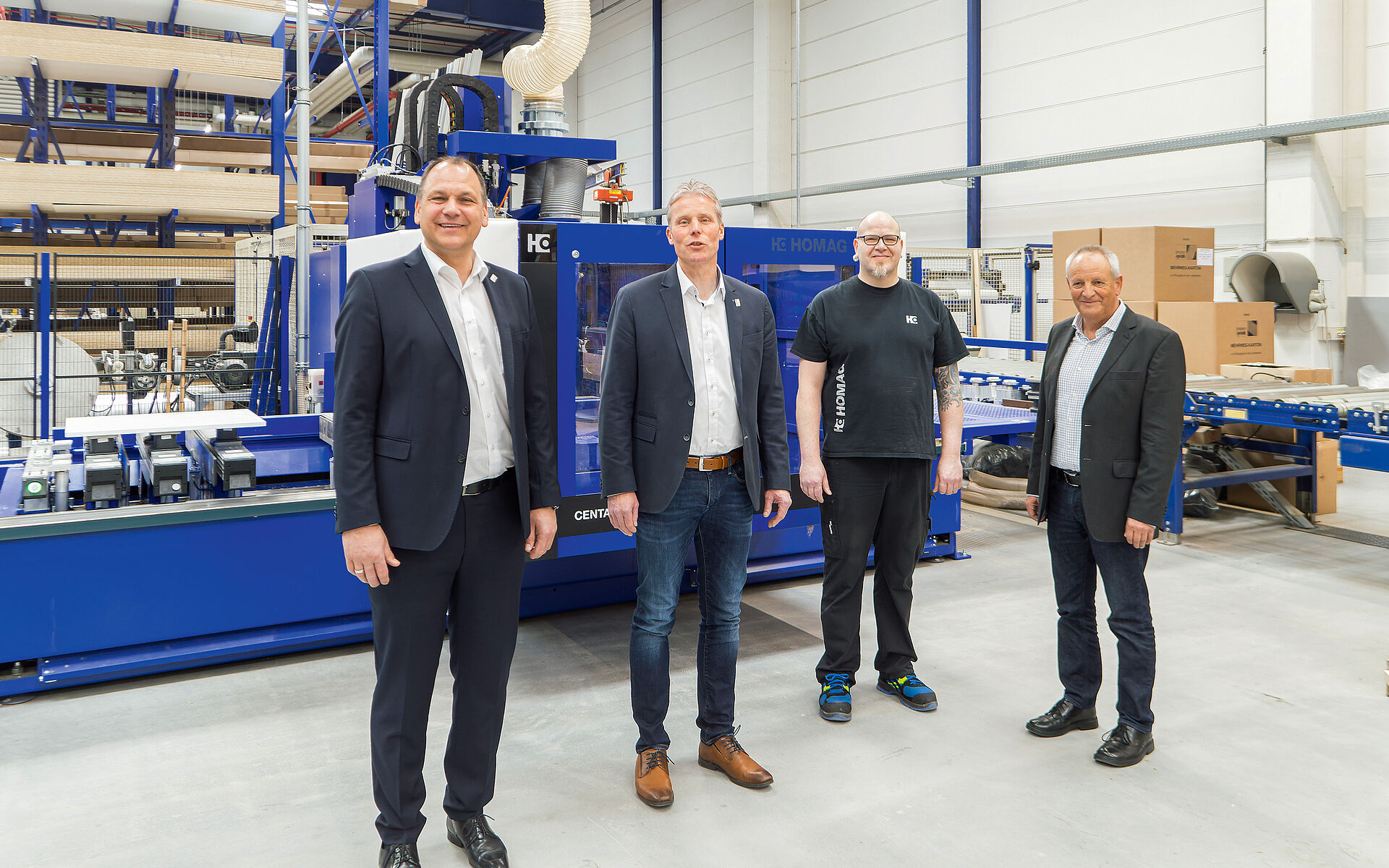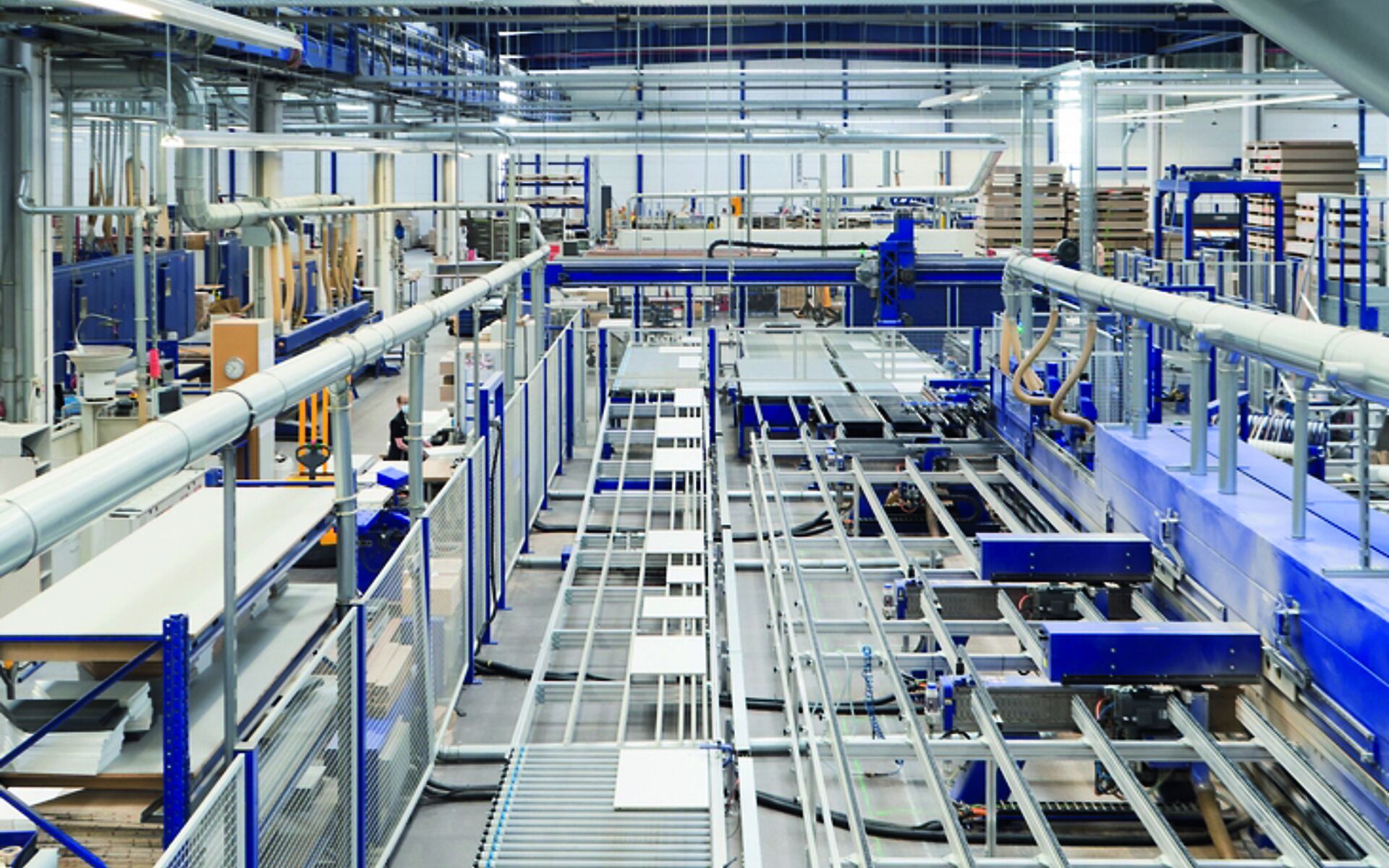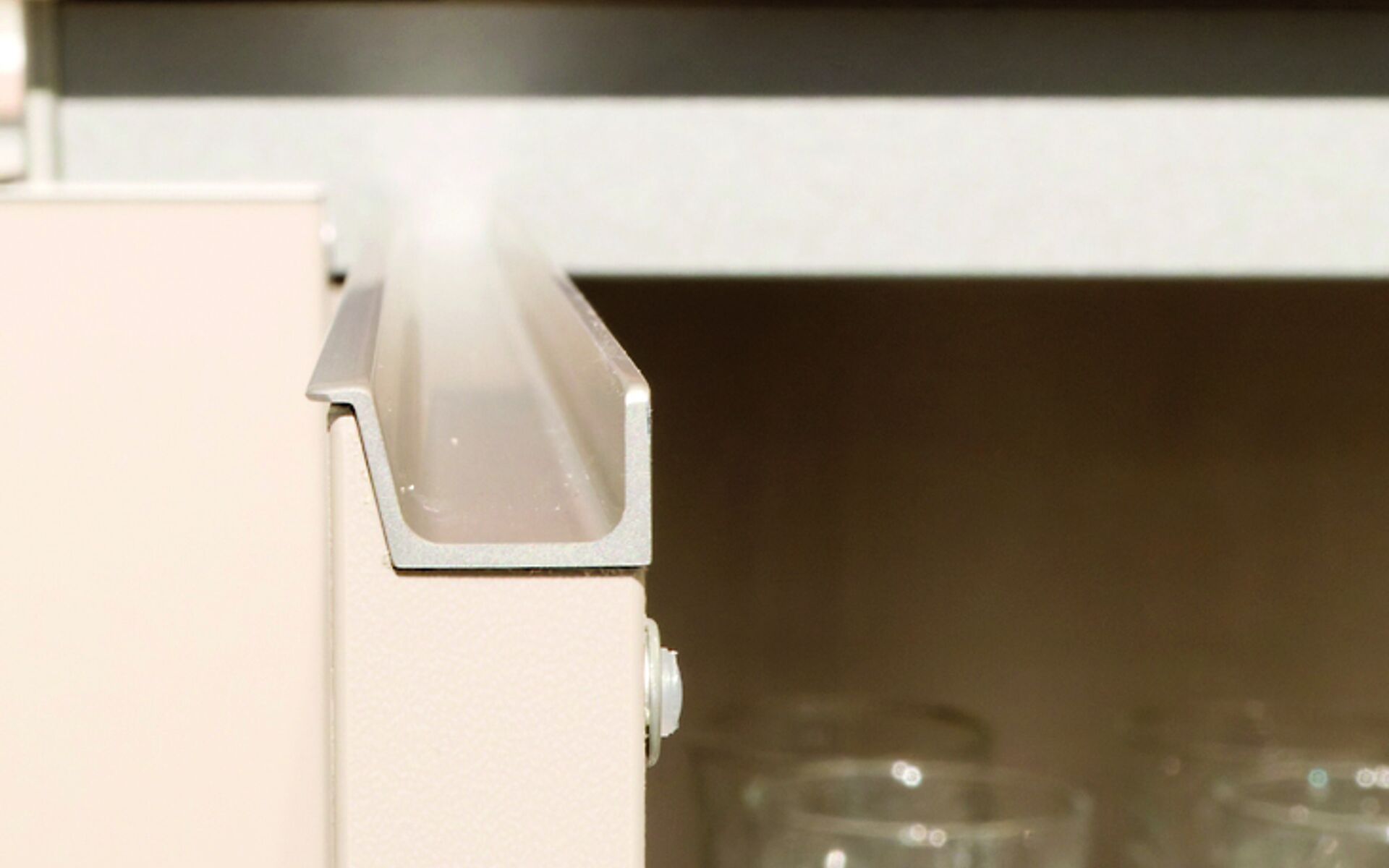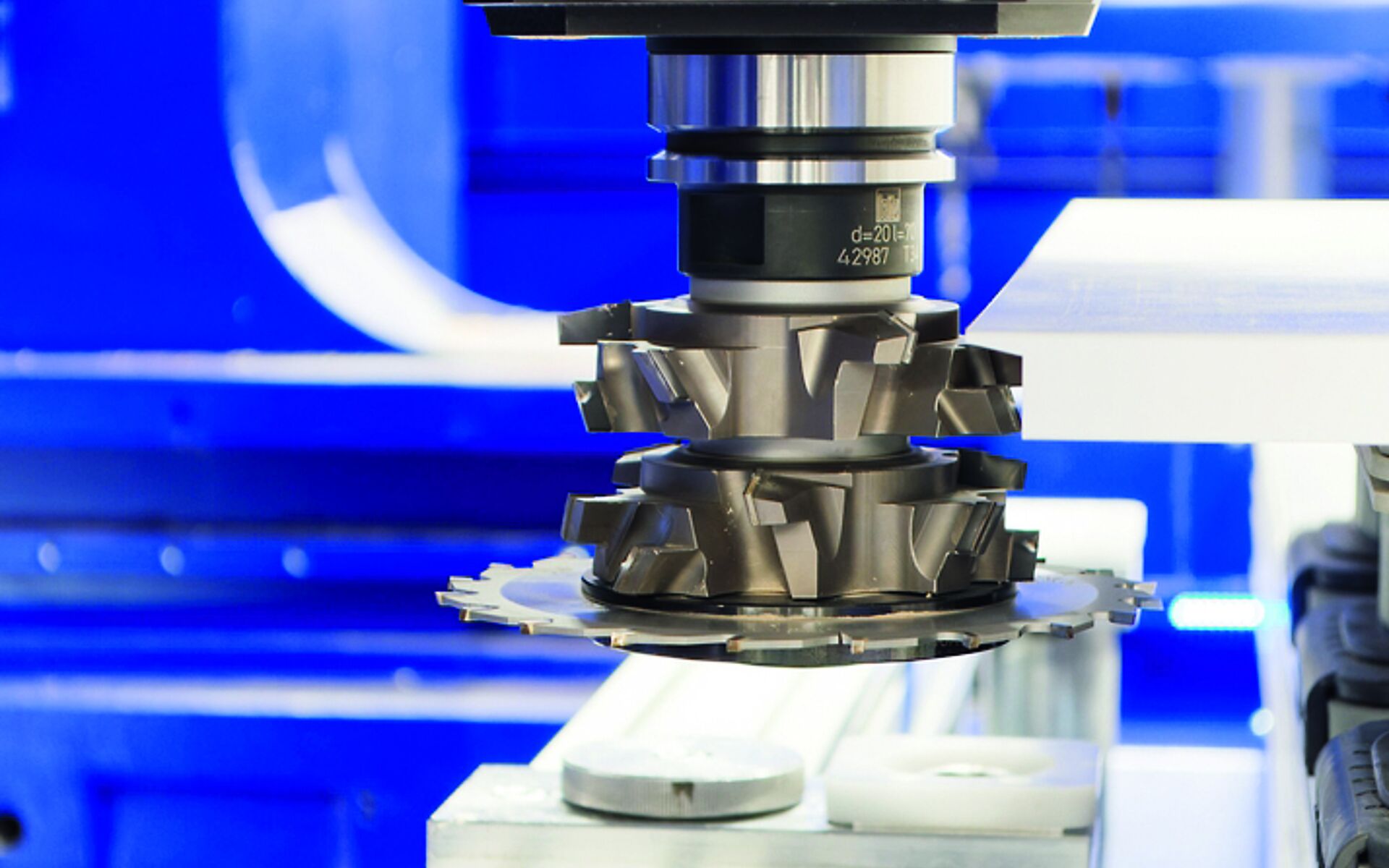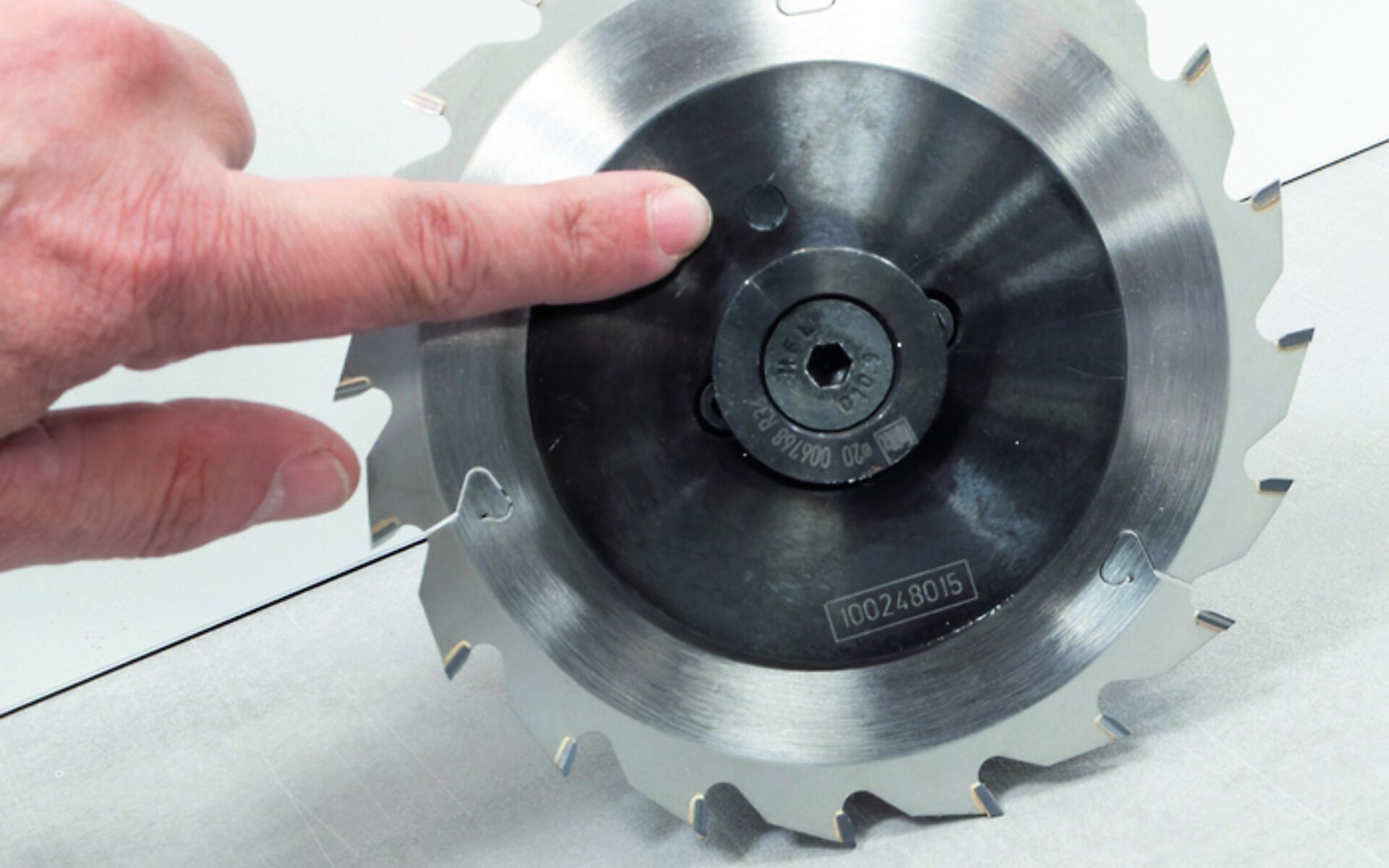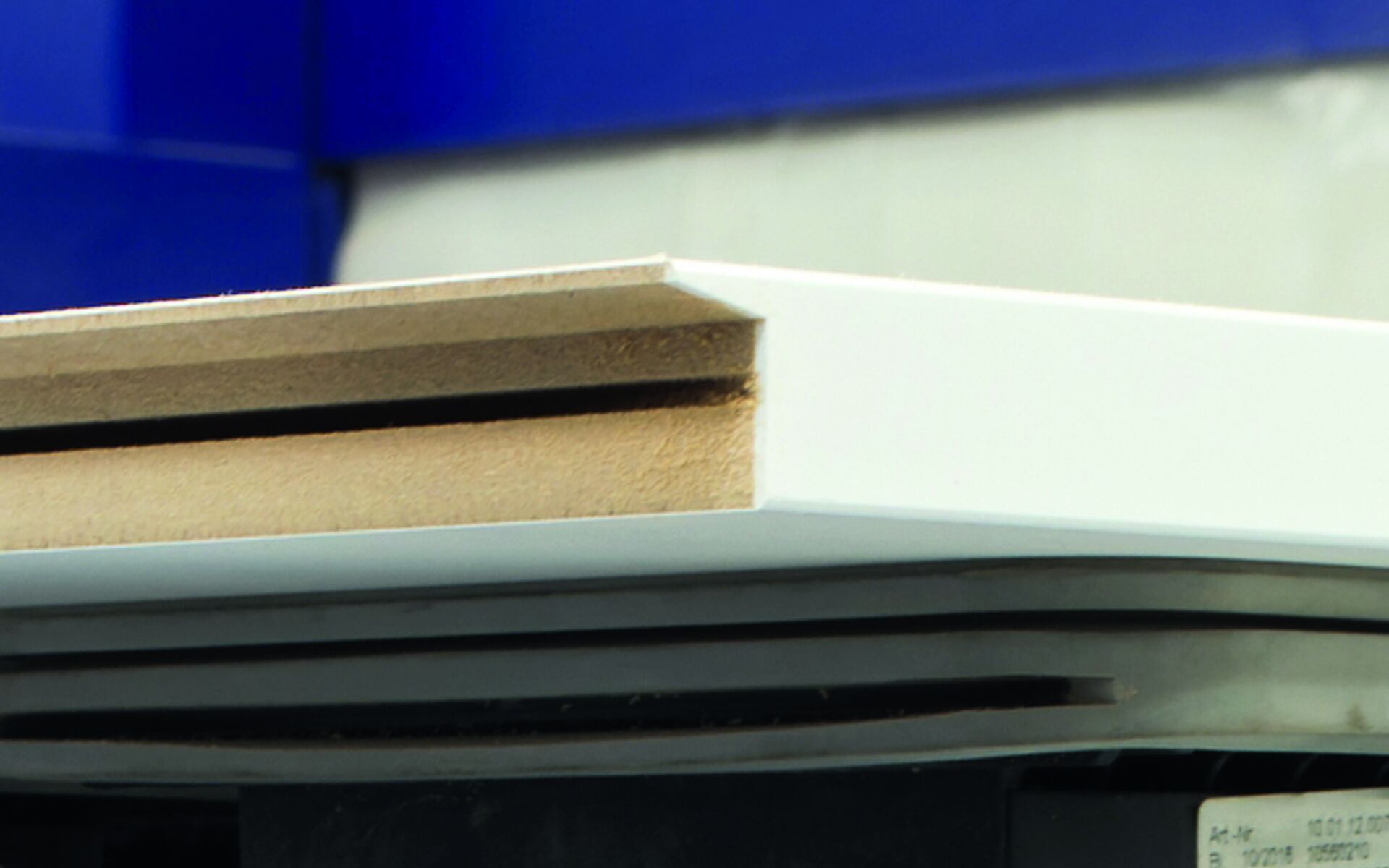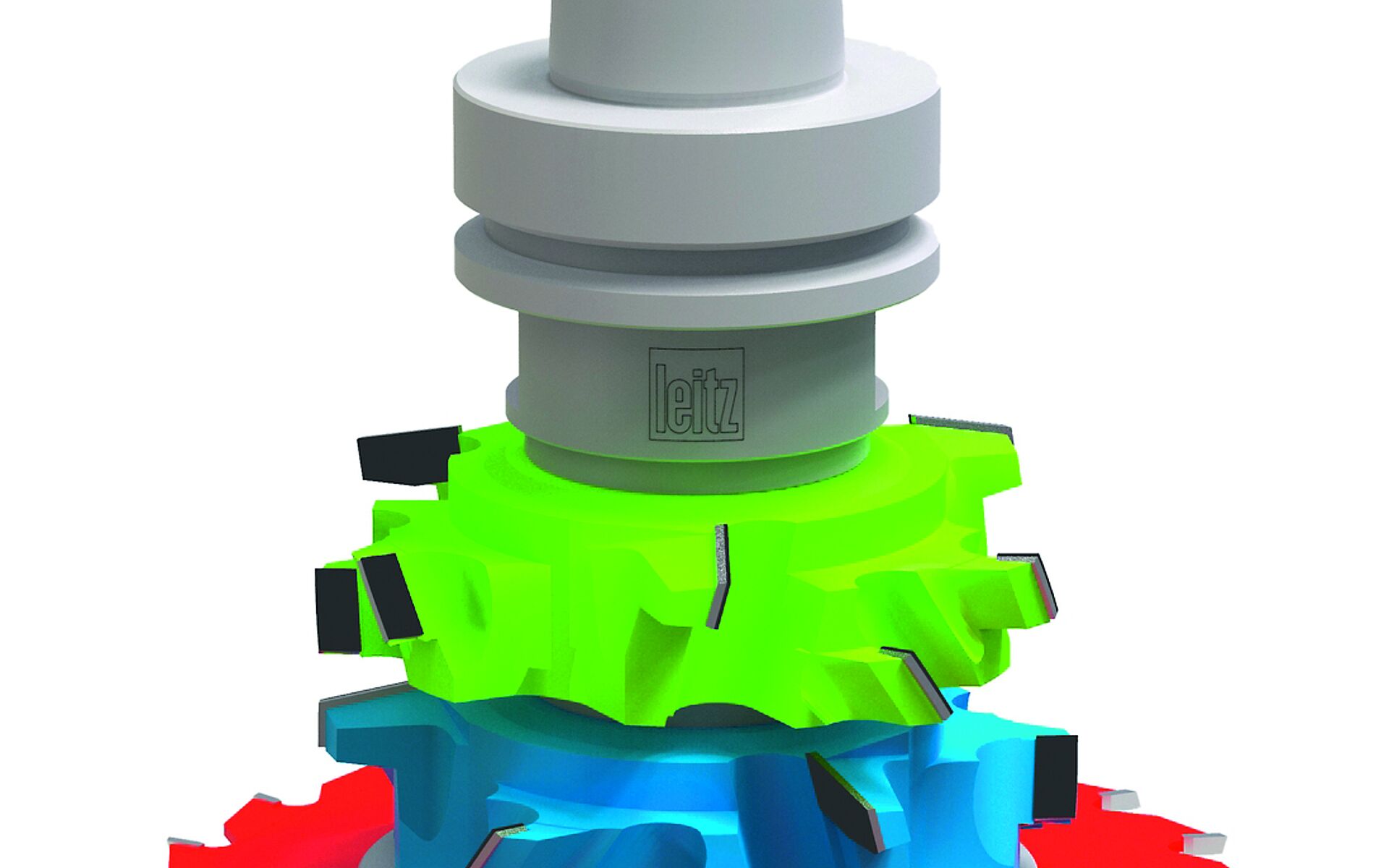In search of time wasters
A CNC at Ballerina Küchen repeatedly ran short programmes with only three different tools. Changing tools took almost as long as the actual work. Stefan Richter from Leitz recognized a huge savings potential here.
Matthias Tost works at a CNC at Ballerina Küchen in Rödinghausen near Herford and cuts aluminium grip bars into fronts. The wood technology engineer places one front after the other and waits for the 1 minute and 40 second programme cycle. In the past, this took almost twice as long. A triple tool from Leitz now saves 40 percent of the time. The front is to be provided with a continuous rebate with a sloping flank as well as an in and out groove for the harpoon bar. To avoid tear-out at the edges, a profile cutter has to enter the workpiece from both sides in counter-rotation. For the same profile, therefore, the machine needs both a right-hand and a left-hand rotating tool. With the grooving saw, the tool magazine must be loaded with three different tools. Each tool is to be inserted into the main spindle once per cycle and exchanged again.
Time wasters detected
Stefan Richter from Leitz recognized that this takes up a lot of time. He is in contact with the technical managing director Heiko Ellersiek, the plant manager Gerhard Mormann, and the machine operator Matthias Tost. Richter often visits production, talks to the machine operators and sees where things can be improved. For the grip bars, he designed a triple tool with a right-handed and a left-handed diamond profile cutter as well as a carbide grooving saw. A hydraulic clamping sleeve holds all three partial tools together on a common shaft. Colleagues at the Leitz plant in Oberkochen designed and manufactured the tool, while Matthias Tost took care of the CNC programming. He defined the grooving saw as the main tool and the two profile cutters as secondary tools. He entered the radii and the tool lengths into the tool database according to the measurement data from Leitz.
With an RFID chip, Leitz prepared the tool for an industry standard that is still in the development phase: the digital tool twin. The Leitz Service will then maintain this. The chip serves as a link to the twin, via which the machine can update the tool dimensions. A tool calls up the programme with its number. If the relevant main tool has already been changed, the change is no longer necessary - time saving: 40 percent.
Always state of the art
Ballerina Küchen, with 346 employees, produces 28,000 kitchen cabinets per year and has recently converted its production to a batch size 1 system with sorting buffer from Homag. Input are half-size panels, output are furniture parts in assembly sequence. However, the kitchen manufacturer is also constantly improving its production processes in many details and works closely with Leitz in the process. The first projects after Ligna 2017 included new sawblades for cutting aluminium profiles and worktops.
Quality and costs match
Heiko Ellersiek says: »We enjoy working with Leitz and trust them. This brings us a great deal of progress in terms of quality, efficiency and tool life. In the current project, the cutting of the grip bars, we were even able to save almost 50 percent of the time at the CNC.«
»Leitz regularly talks to our machine operators on site,
identifies weak points in the process and suggests improvements.
In this way, we always work efficiently, precisely and cost-effectively.«
Heiko Ellersiek
(Photos: dds)
